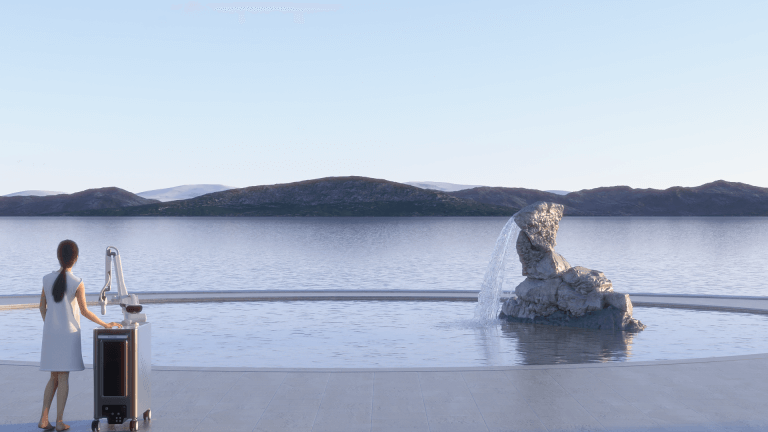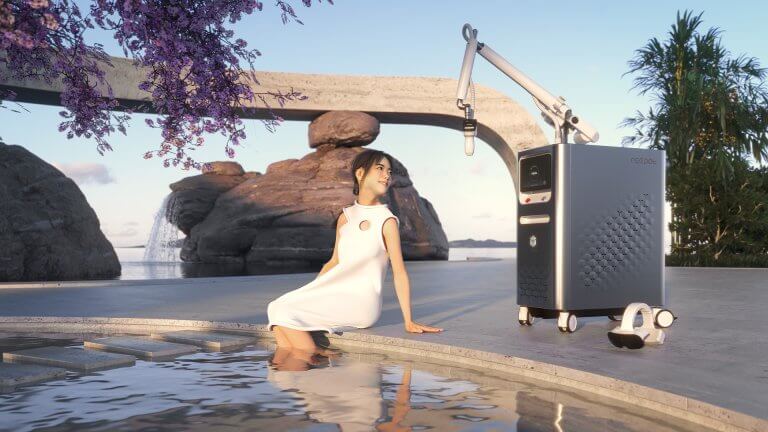3D rendering is in vogue right now as the competition in the market increasingly intensifies. Many brands are now using 3D models, advanced technologies like augmented reality or virtual reality to get a hold of their customer’s attention. Consequently, this has led to the rising usage of 3D rendered images to appeal to buyers. As a result, the 3D rendering is predicted to grow over 20% CAGR between 2020 and 2026.
Discover the following in the blog:
What is 3D Rendering?
3D rendering is the process of creating photorealistic images from 3D models. Visuals are crafted based on data related to color, texture, and materials. In short, a 3D rendered image on a computer is similar to a picture taken in the real world.
Techniques Used in Renderings
Rasterization
Rendering by rasterization is the most popular method to date. A rasterizer projects the vertices of the polygons onto the screen. By utilizing this geometry data, 2D images can be created.
Texture and color information fill up the spaces formed by the vertices. Computer games and GUI mainly employ this rendering process.
Acoolrocket’s example of the rasterization process
Ray Casting
In this method, a camera casts a single ray of light through every pixel. When this ray hits the object, the closest points are recorded by the camera. The color of the objects is known from the texture as the rays touch the surface.
However, no reflections, shadows, or refractions are recorded. Only the color information is available to the designers. Therefore, visuals created with ray casting can look flat and two-dimensional.
Visuals created with ray casting
Ray Tracing
Ray tracing is an advanced form of rendering. It is a method where a computer sends more than one ray to know the object’s color. When the first ray hits the object, it sends more rays to find out if any other object is in its way. This method has helped designers dictate materials’ nature in their rendering, and this has made 3D visuals more realistic.
Andrey Lebrov provides a great explanation of Ray tracing and how technology works to create stunning 3D visuals
Path Tracing
Path tracing, an offline rendering method, is famous among visual effects and video game artists. A virtual camera will send a ray towards the object. After multiple reflections on various surfaces, a light source captures it. As the best technique, path tracing includes soft shadows and color bleeding in the rendered images.
Rendering Equation
Rendering equation is a form of rendering where an integral equation determines the lighting in the computer-generated imagery. The equation considers the total brightness by adding both emitted and reflected light. Most of the rendering techniques try to solve this equation to develop realistic representations.
What Do 3D Renderings Mean For Businesses?
Refinement
According to the audience’s needs, every minute detail can be refined using 3D rendering technology. Designers just need to modify the existing 3D models to match an object’s material or color.
Control
Rendering allows 3D artists to have complete control over lighting elements. 3D tools have advanced lighting systems that can simulate both artificial and natural light. Designers can have the lighting at any time of day in either interior or exterior locations. 3D rendered images taken in flawless lighting never fail to capture the viewer’s eye.
Time
In the perspective of time, businesses can benefit from 3D rendering in two major ways. Firstly, it is faster to create 3D renders for their products instead of using traditional photography. Secondly, it shortens the development stage in the manufacturing process by making rapid revisions to the product prototype. This also leads to less material waste produced in the manufacturing process.
Experience
In the expanding virtual world, customers crave realistic and personalized content and experiences. These realistic visuals convey the needed information to the buyer and, ultimately, assist their decision. In the case of 3D product renderings, they can be customized according to the buyer’s tastes and likes.
Cost
3D rendering is a cost-efficient way of creating product images. These do not need expensive photography and lighting crews and can be modified repeatedly without starting from scratch.
Features
The ultimate goal of any business is to communicate its product features clearly. This is not always attainable. But with rendered images, customers can have a full view of the product from every angle. The audience understands the vision of the business, which drives more conversions.
Want to launch your branded 3D Campaign?
Thank you!
We’ll get back to you with further details.
Mixed Reality: Where 3D Renderings meet Real World
A hybrid of real and virtual world, Mixed reality has been limited to film and design industry for many years. Both elements of physical world and 3D rendering, together in perfect harmony create amazing and entertaining visualizations. But recently the application of mixed reality has expanded to advertising industry.
Brands are now using it to create mesmerizing visual ad campaigns that will hold the eye of the target audience. In the campaigns involving 3D renderings and mixed reality, the initial shootings are carried out with the elements against a green screen. Later, 3D renderings and virtual spaces are applied to this shot elements to create a stunning and complete campaigns.
Benefits of incorporating Mixed Reality in Brands’ marketing campaigns
Visual-rich advertising
Attention-Capturing
Immersive Experiences
Not only in advertising campaigns, brands can also create customized virtual environments with the mixed reality technology. In these virtual spaces, customers can interact with the products and services in real-time. This not only boosts their buying confidences, but also forges a special memory towards such brands.
Be a Part of the Digital World
Imaginative creations are no longer limited to the mind. They are now turning into reality as technology continues to develop. 3D rendering is the perfect tool that transforms our visions into real-life visuals. As the visual economy grows, brands have to utilize this digital asset to top the customer’s charts.

